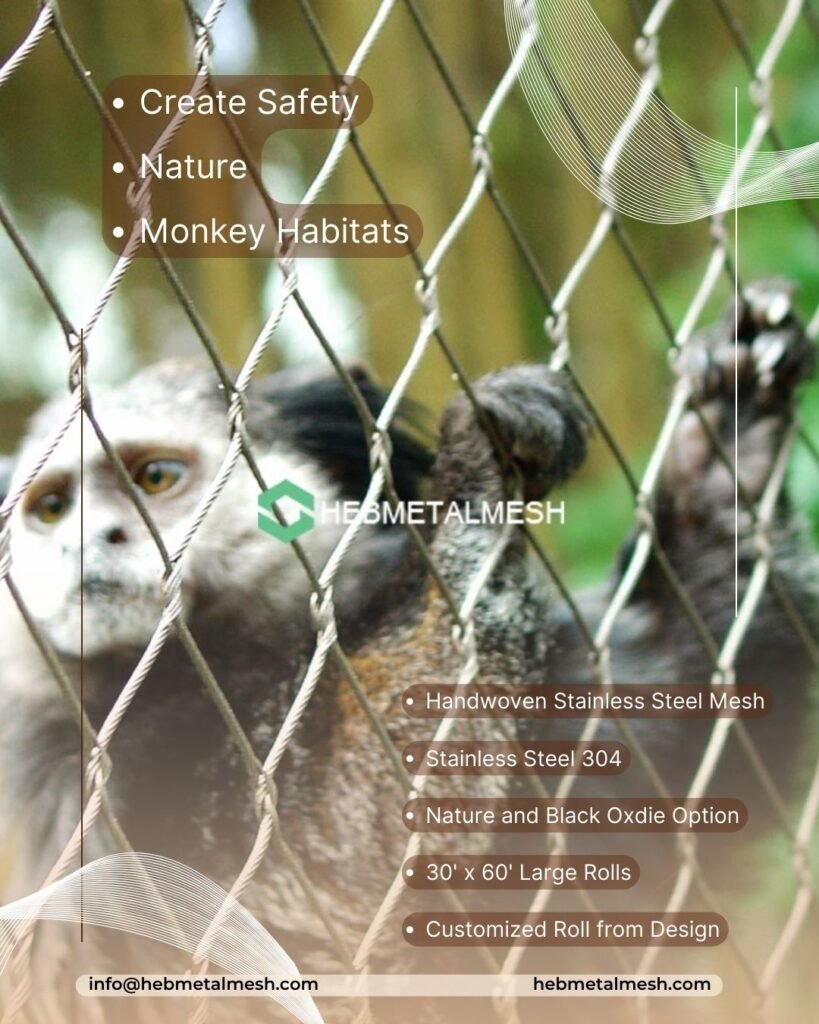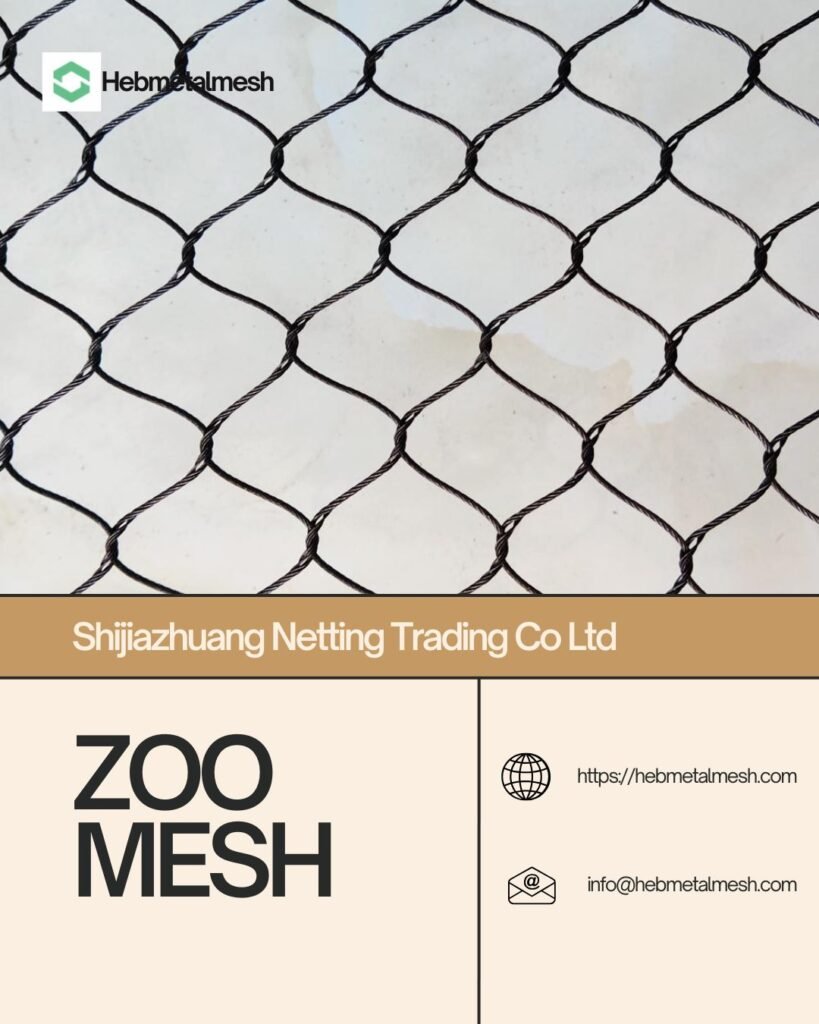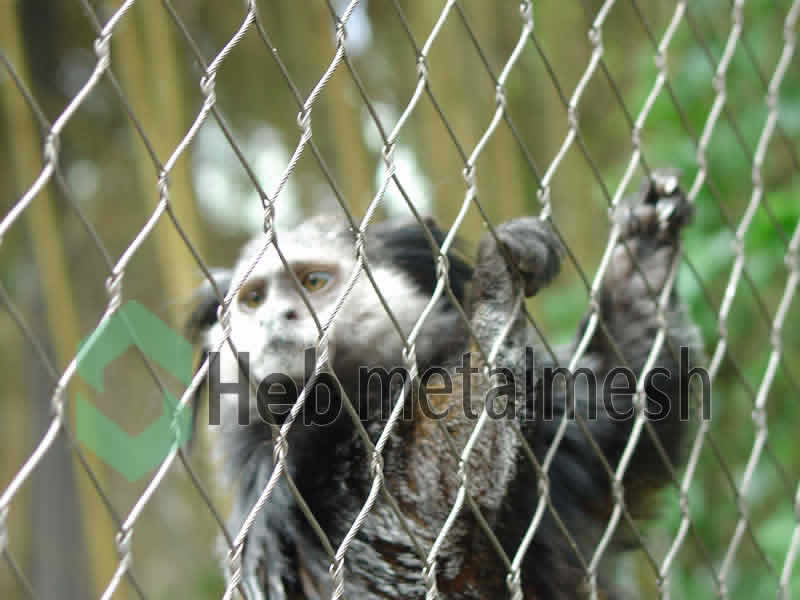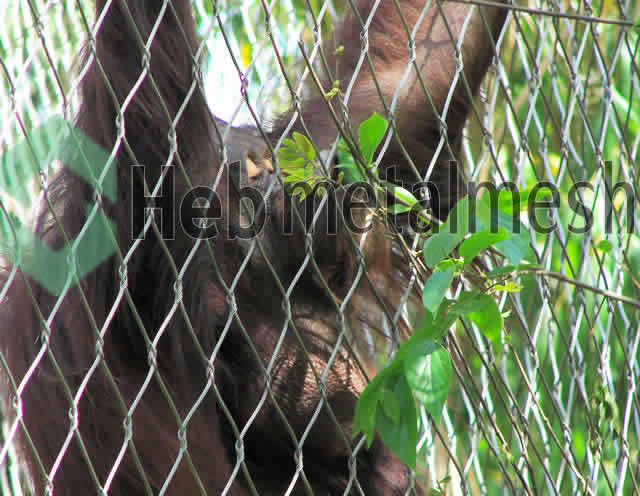Introduction to Monkey Exhibits
Monkey exhibits are a vital component of contemporary zoos and wildlife parks, offering visitors a unique opportunity to engage with the world of primates. These carefully crafted environments do more than simply showcase these fascinating animals; they play a crucial role in educating the public about primate behavior, conservation issues, and the complex ecosystems they inhabit. By observing monkeys in a simulated natural habitat, guests gain insights into social structures, foraging behaviors, and interactions that are typical within various primate species.
The design of a monkey exhibit is an art form in itself, merging aesthetics with functional needs to ensure the well-being of the animals. Elements such as climbing structures, water features, and enriched environments are strategically incorporated to encourage natural behaviors and maintain the animals’ physical and mental health. These design choices not only enhance the viewing experience for guests but also provide monkeys with essential stimulation and opportunities for exercise, fostering a sense of wellbeing in their habitats.
Furthermore, monkey exhibits serve as platforms for conservation messaging, highlighting the threats faced by primate populations and the importance of biodiversity. Institutions often partner with conservation organizations to further educate the public about the pressing need for habitat protection and sustainable practices. The connection established through these exhibits can inspire visitors to become advocates for wildlife conservation, fostering a sense of responsibility towards endangered species.
In summary, the design and purpose of monkey exhibits extend beyond mere entertainment; they are integral to promoting awareness and understanding of primate species and their environments. Through creativity and care in design, these exhibits reflect an essential commitment to conservation and education that resonates with audiences of all ages.
The Vision Behind the Design
Creating a monkey exhibit requires the collaborative efforts of various professionals, each bringing unique expertise to the table. Architects play a pivotal role in the initial design phase, focusing on aesthetic attributes and structural integrity while ensuring the exhibit integrates seamlessly with its natural surroundings. Their vision is informed by a comprehensive understanding of space utilization and visitor flow, which is essential for crafting exhibits that engage patrons while prioritizing animal safety and welfare.
Alongside architects, animal behaviorists contribute critical insights into the biological and social needs of monkeys. Their expertise allows for the development of environments that mimic the monkeys’ natural habitats as closely as possible. This includes considerations of climbing structures, water features, and vegetation that promote naturalistic behaviors, which are crucial for physical and psychological health. By observing the monkeys in their current environments, these experts can help suggest features that facilitate interactive and stimulating experiences.
Zookeepers also play an integral part in the design process. With their daily hands-on experience, they understand the monkeys’ preferences and behaviors, providing invaluable feedback on what materials and layouts work best in practice. Their observations inform decisions, from the types of enrichment tools provided in the exhibit to the best locations for viewing spaces that keep both animals and visitors safe.
Successful case studies of monkey exhibits showcase how effective collaboration results in engaging and functional environments. For instance, the innovative designs at prominent zoos, incorporating climbing areas, water access, and shaded resting spots, highlight the importance of an interdisciplinary approach. These examples illustrate not only the aesthetic appeal of monkey exhibits but also their capacity for enhancing the overall well-being of the animals housed within them.

Safety First: Importance of Safety in Exhibit Design
When designing a monkey exhibit, prioritizing safety is of utmost importance for both the well-being of the animals and the protection of visitors. The intricate balance between creating an engaging environment for monkeys and ensuring secure conditions cannot be overlooked. Designers must consider various factors to mitigate risks effectively.
One of the primary considerations in monkey exhibit design involves the selection of durable materials. Exhibits must utilize high-quality, non-toxic materials that can withstand the wear and tear associated with an active environment. This is particularly vital as monkeys are known for their intelligence and dexterity, which means they can manipulate their surroundings. The materials should be structurally sound, preventing any injury from sharp edges or unstable elements.
Secure enclosures are another critical aspect of safety in monkey exhibits. Enclosures should be designed to prevent escapes while allowing for optimal visibility for visitors. This can be achieved by using reinforced glass or stainless steel mesh that not only enhances security but also maintains a clear line of sight. Additionally, care must be taken to ensure that any gaps or potential entry points for the monkeys are thoroughly monitored and sealed to avert potential accidents.
Proper fencing also plays a pivotal role in safeguarding both monkeys and guests. The design should take into consideration the natural behaviors of the species housed within the exhibit. Fencing must be tall enough to prevent climbing and should also incorporate barriers that deter jumping or reaching. This serves a dual purpose as well, as it not only protects visitors but also helps create a tranquil environment where the monkeys can thrive without undue stress from the outside world.
Failure to implement these safety measures may lead to disastrous consequences for both the animals and the public. With the right approach to safety, a well-designed monkey exhibit can not only fulfill its educational and entertainment functions but also serve as a model for best practices in animal care and exhibit safety.
Choosing the Right Fence Netting for Your Exhibit
When designing a monkey exhibit, one of the most critical considerations is the choice of fence netting. This element serves as a primary barrier, ensuring the safety of the monkeys while also contributing to the overall aesthetic of the exhibit. There are several types of netting materials available, each with distinct qualities that cater to the specific needs of primates.
One widely used option is polyethylene netting, known for its durability and resistance to the elements. This type of netting is UV stabilized, making it ideal for outdoor environments where exposure to sunlight can degrade other materials. It also boasts a lightweight quality, which allows for easy installation while still providing a robust enclosure. The mesh size is crucial; it should be small enough to prevent escape while allowing for adequate ventilation and visibility, thereby enriching the monkeys’ experience.
Another alternative is stainless steel wire netting. While it is more expensive than its plastic counterparts, its strength and longevity make it a worthwhile investment, especially for larger species or those known for their climbing abilities. Stainless steel resists rust and corrosion, ensuring that the monkey exhibit maintains its integrity over time. Plus, from a visual perspective, this type of netting can provide a chic, modern look that elevates the overall design of the enclosure.
Additionally, woven mesh netting can be considered for those seeking a more natural appearance. This type of netting mimics the looks of their natural habitats, promoting a more immersive experience for the monkeys. However, it is essential to verify that the material is robust enough to withstand potential wear and tear from active primate behavior.
In selecting the appropriate fence netting for a monkey exhibit, it is crucial to consider factors such as durability, aesthetics, and the specific species that will inhabit the enclosure. The right choice not only ensures the safety and well-being of the animals but also enhances the overall visitor experience.

Wire Rope Mesh: A Premium Choice for Monkey Exhibits
When considering fencing options for monkey exhibits, wire rope mesh stands out as a top-tier solution. Renowned for its exceptional durability and versatility, this material not only caters to the safety requirements vital for both the animals and visitors but also enhances the aesthetic appeal of the exhibit.
The safety features of wire rope mesh are particularly noteworthy. This robust material is engineered to withstand the energetic antics of monkeys, ensuring that they remain secure within their habitat while allowing for natural movement. The openings in the mesh are sized specifically to prevent escape or accidental injuries, making it an ideal choice for active primates. Additionally, experts in zoo design and animal welfare emphasize the importance of using materials that promote safe interactions between the animals and the public. As one zoo architect stated, “Wire rope mesh offers an unparalleled level of safety while allowing us to create stimulating and engaging environments for the monkeys.”
In addition to safety, wire rope mesh provides a visual clarity that enhances the visitor experience. The transparent nature of the mesh allows for unobstructed views of the monkeys, creating an immersive and interactive atmosphere for zoo-goers. This is particularly beneficial in educational settings where the relationship between visitors and animals is fostered through observation. By utilizing wire rope mesh, zoos can create an engaging interface that encourages learning and appreciation of these intelligent creatures.
Furthermore, the versatility of wire rope mesh enables its incorporation into various designs and environments. It can easily adapt to different landscape requirements, making it suitable for both open-air and indoor monkey exhibits. Overall, the use of wire rope mesh presents a balanced approach to safety, visibility, and aesthetic coherence, solidifying its position as a premium fencing choice for monkey exhibits.
Exploring Ready-Made References and Inspirations
In the design of a captivating monkey exhibit, looking towards existing successful representations can serve as invaluable references and sources of inspiration. Renowned zoos worldwide have developed creative designs that not only prioritize the safety and comfort of the monkeys but also engage and educate visitors. The San Diego Zoo, for example, features a spacious monkey exhibit that mimics the natural habitat of these primates, incorporating abundant climbing structures, water features, and diverse vegetation. This environment encourages natural behaviors, allowing monkeys to thrive while entertaining zoo-goers.
Another noteworthy example can be found at the Bronx Zoo, where their monkey habitats emphasize openness and visibility. The incorporation of panoramic glass panels provides visitors with unobstructed views of the monkeys in their playfully designed environment. This layout allows for enriching interactions between the monkeys and visitors while ensuring that the animals feel secure. Moreover, thoughtful design elements, such as varied terrain, climbing opportunities, and shaded areas, contribute to a stimulating environment that promotes exercise and mental engagement for the monkeys.
Creative elements are key when designing a monkey exhibit. The Oregon Zoo’s enrichment zones, for instance, showcase how artful installations can improve the experiences of the animals. Features like ropes, swings, and visually stimulating climbing materials are interspersed with naturalistic surroundings, creating a well-rounded habitat that encourages exploration and interaction. By integrating both functional and artistic components, these exhibits demonstrate how thoughtful planning can result in spaces that are visually striking and conducive to the monkeys’ well-being.
These exemplary designs provide a rich foundation for those looking to create or renovate a monkey exhibit. By analyzing successful projects from around the globe, designers can glean insights into the importance of creating vibrant and enriching environments that enhance the lives of monkeys while captivating the interest of visitors.
The Role of Modern Technology in Exhibit Design
In recent years, modern technology has significantly impacted the design of animal exhibits, particularly monkey exhibits, leading to enhanced experiences for both animals and visitors. The integration of advanced tools such as 3D design software and virtual reality modeling enables designers to create compelling and immersive environments that simulate a monkey’s natural habitat. These technologies allow for meticulous planning and execution, ensuring that every aspect of the exhibit fulfills the physical and psychological needs of the primates while also providing an engaging experience for the audience.
3D design software offers a comprehensive visualization of the exhibit before actual construction begins. This technology allows architects and designers to explore various layouts, materials, and spatial arrangements. For example, the ability to visualize climbing structures, water features, and interactive zones in a three-dimensional format ensures that the animals have enough enrichment while facilitating optimal viewing angles for guests. The simulation capabilities of 3D software can reduce costly changes during the construction phase, leading to more efficient project timelines and budget management.
Moreover, virtual reality modeling takes this concept a step further, allowing stakeholders, including zookeepers and potential visitors, to experience the monkey exhibit digitally. This precursor to the physical build fosters critical feedback and collaboration among various teams, ensuring that the final design is not only visually appealing but also functional and safe. Additionally, the use of smart materials in construction is on the rise, emphasizing safety and sustainability. These materials often include non-toxic and durable options that enhance the longevity of the exhibit while minimizing environmental impacts.
By embracing these innovative technologies, designers can deliver monkey exhibits that prioritize the well-being of the animals and engage visitors in meaningful ways. The integration of modern tools transforms traditional exhibit design into a more dynamic, interactive, and responsible practice, ultimately enriching the experience for all involved.
Engaging Visitors: Educational and Interactive Elements
Creating an engaging and educational experience in a monkey exhibit is essential for inspiring visitors and fostering an appreciation for these captivating primates and their natural habitats. To facilitate a deeper connection, several interactive elements can be integrated into the design of the exhibit. These features not only enhance the visitor experience but also serve an important educational purpose.
One effective method to capture visitor interest is through the use of strategically placed viewing windows. These transparent barriers offer a close-up look at the monkeys without disturbing their natural behaviors. Visitors can observe these incredible animals interacting with each other, climbing, and playing, which provides them with a genuine appreciation for their agility and social structures. This unique perspective encourages visitors to contemplate the conservation needs of these species.
Incorporating live feeding sessions can also significantly enhance engagement. Scheduled demonstrations, conducted by knowledgeable staff, allow visitors to witness the monkeys’ dietary habits and learn about their natural diets. Such interactive moments not only inform but also entertain, making the overall experience more memorable. Visitors might also have the opportunity to participate in special feeding days, where they can engage in feeding activities under strict supervision, reinforcing a sense of responsibility toward wildlife care and conservation.
Furthermore, the integration of augmented reality (AR) elements can enrich the educational aspect of the exhibit. Utilizing AR technology, visitors can use their smartphones or provided tablets to access additional information about various monkey species, their habitats, and conservation challenges. This immersive experience allows individuals, especially children, to engage actively in learning, thereby reinforcing the importance of protecting these remarkable animals and their environments.
By carefully designing a monkey exhibit with these engaging and educational components, zoos and wildlife parks can inspire future generations to become advocates for wildlife conservation. The blend of interactive experiences and educational information cultivates a profound understanding and respect for monkeys, ensuring that the message of conservation resonates well beyond their visit.

Conclusion: The Future of Monkey Exhibits
The future of monkey exhibits is poised for exciting advancements, driven by a commitment to both animal welfare and visitor engagement. As we have explored throughout this discussion, the evolution of exhibit design is centered on creating environments that closely mimic the natural habitats of monkeys. This not only promotes the well-being of these primates but also enhances the educational experience for the visitors who come to observe and learn about their behaviors. Innovative design trends have already begun to emerge, emphasizing the importance of interaction, enrichment, and the integration of technology.
Safety remains at the forefront of monkey exhibit construction, ensuring that both the animals and the public are protected. As new materials and engineering techniques are developed, exhibit builders can create more secure environments without compromising aesthetic appeal or the animals’ quality of life. Enhancements in safety protocols and regular inspections will help maintain these environments and adapt to the evolving needs of the monkey populations. The emphasis on safety not only reassures visitors but also encourages institutions to invest resources towards creating state-of-the-art exhibits.
Furthermore, it is crucial to focus on showcasing the natural behaviors of monkeys. By incorporating climbing structures, foraging opportunities, and social interaction spaces, exhibits can mimic the complexities of wild habitats. This holistic approach captures the attention of the audience, fostering a deeper understanding and appreciation for these remarkable creatures. As we look ahead, there is an opportunity for zoos and wildlife parks to collaborate with conservationists, educators, and designers, ensuring that future monkey exhibits are not only spaces for entertainment but also pivotal platforms for education and species preservation.
In conclusion, the potential for monkey exhibits is vast, and with continued innovation and a focus on safety, we can look forward to exhibits that are both captivating and educational, inspiring future generations to connect with and protect wildlife.
FAQs: Stainless Steel Netting for Monkey Exhibits & Animal Safety
Yes, our stainless steel netting is specifically designed for animal safety, including monkey exhibits. It features smooth, burr-free edges to prevent injuries and is constructed from non-toxic, high-grade materials that resist chewing or corrosion. The mesh size can be customized to prevent finger or toe entanglement, ensuring a secure environment for primates.
Our stainless steel netting is ideal for outdoor monkey enclosures due to its UV resistance and structural integrity. It withstands extreme temperatures, heavy rain, and wind without warping or weakening, making it a long-term solution for zoos, sanctuaries, or wildlife parks prioritizing animal safety and enclosure longevity.
We use 304 marine-grade stainless steel, which offers superior corrosion resistance—perfect for aquatic monkey exhibits, misting systems, or tropical habitats. This alloy resists saltwater, chlorine, and humidity, ensuring the netting remains rust-free and safe for primates in high-moisture settings.
Absolutely. Our netting is flexible for custom shapes, curves, or multi-level enclosures while maintaining safety standards. We prioritize tensile strength and secure fastening systems to ensure gaps or weak points don’t develop, even in intricate primate habitat designs.
Professional installation is recommended. Our netting includes reinforced tensioning systems and tamper-proof anchors to prevent sagging or breaches. Maintenance is minimal—routine inspections and gentle cleaning with water preserve its appearance and functionality for years.
Yes, we offer heavy-duty, chew-resistant stainless steel netting with thicker gauges and reinforced weave patterns. This design deters aggressive chewing or climbing, making it ideal for larger primates or species with strong jaws, ensuring both animal safety and enclosure security.


